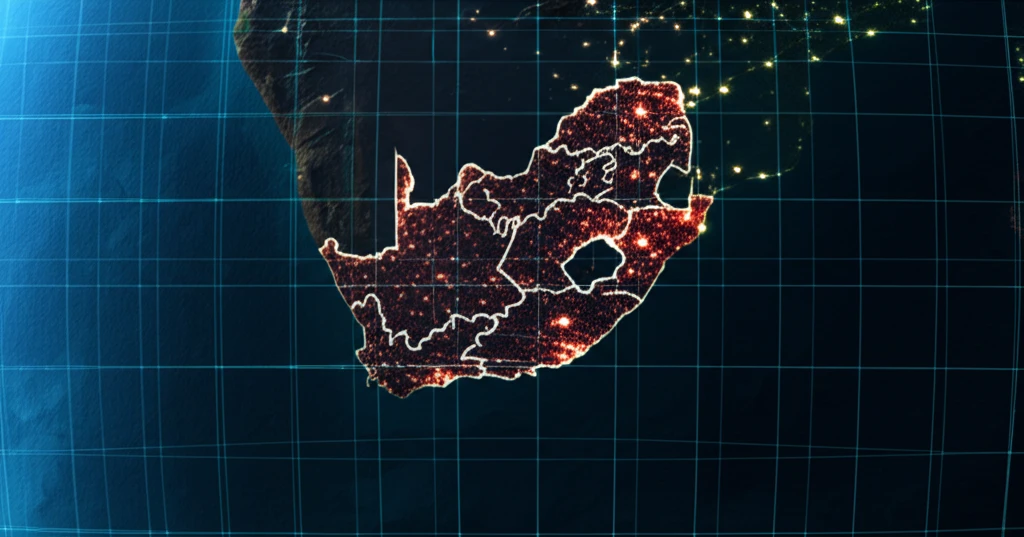
Decoding Economic Growth: Is Night Light Data the New GDP?
"Explore how innovative uses of nighttime light data are challenging traditional economic measures and offering fresh insights into South Africa's growth dynamics."
For decades, Gross Domestic Product (GDP) has been the gold standard for measuring a nation's economic health. It's the number everyone watches, the metric that guides policy, and the benchmark for progress. But what if there was a better way? A method that cuts through the noise of traditional data and offers a clearer, more real-time view of economic activity? Enter nighttime light data—a revolutionary approach that's turning heads and challenging the status quo.
Imagine peering down at Earth from space, not during the day, but at night. What you'd see is a patchwork of glowing lights, each point representing human activity, energy consumption, and economic vibrancy. This isn't science fiction; it's a rapidly developing field that uses satellite imagery to measure economic growth. The core idea? Where there's light, there's economic activity. And increasingly, researchers are finding that this light offers a more accurate and nuanced picture than GDP alone, especially in emerging economies.
This article delves into the fascinating world of nighttime light data and its potential to revolutionize how we understand economic growth. We'll focus on a compelling case study: South Africa, where researchers are using light data to challenge traditional GDP measurements and uncover new insights into the nation's economic dynamics. Get ready to question everything you thought you knew about measuring progress.
The Limitations of GDP: Why We Need a New Perspective

GDP, despite its widespread use, has some critical limitations, especially when applied to emerging economies. Traditional GDP calculations often rely on data that can be outdated, incomplete, or even intentionally skewed. This can lead to inaccurate assessments of economic health and misinformed policy decisions. The study emphasizes that in regions where data collection is inconsistent or unreliable, GDP figures may not fully reflect the ground reality.
- Data Reliability: GDP relies on accurate and timely data, which can be a challenge in some regions.
- Informal Economy: GDP often misses the economic activity in the informal sector.
- Distributional Issues: GDP doesn't reflect how wealth is distributed within a country.
- Non-Economic Factors: GDP doesn't account for social progress, environmental impacts, or overall well-being.
The Future of Economic Measurement: Shining a Light on Progress
The shift towards using nighttime light data represents a significant step forward in how we measure and understand economic growth. While traditional GDP measurements will likely remain a key indicator, incorporating alternative data sources like satellite imagery offers a more nuanced and accurate perspective. This is particularly crucial for emerging economies, where reliable data is often scarce. By embracing these innovative approaches, policymakers and researchers can gain deeper insights, make more informed decisions, and ultimately drive more sustainable and equitable economic development. The future of economic measurement is bright—literally.
